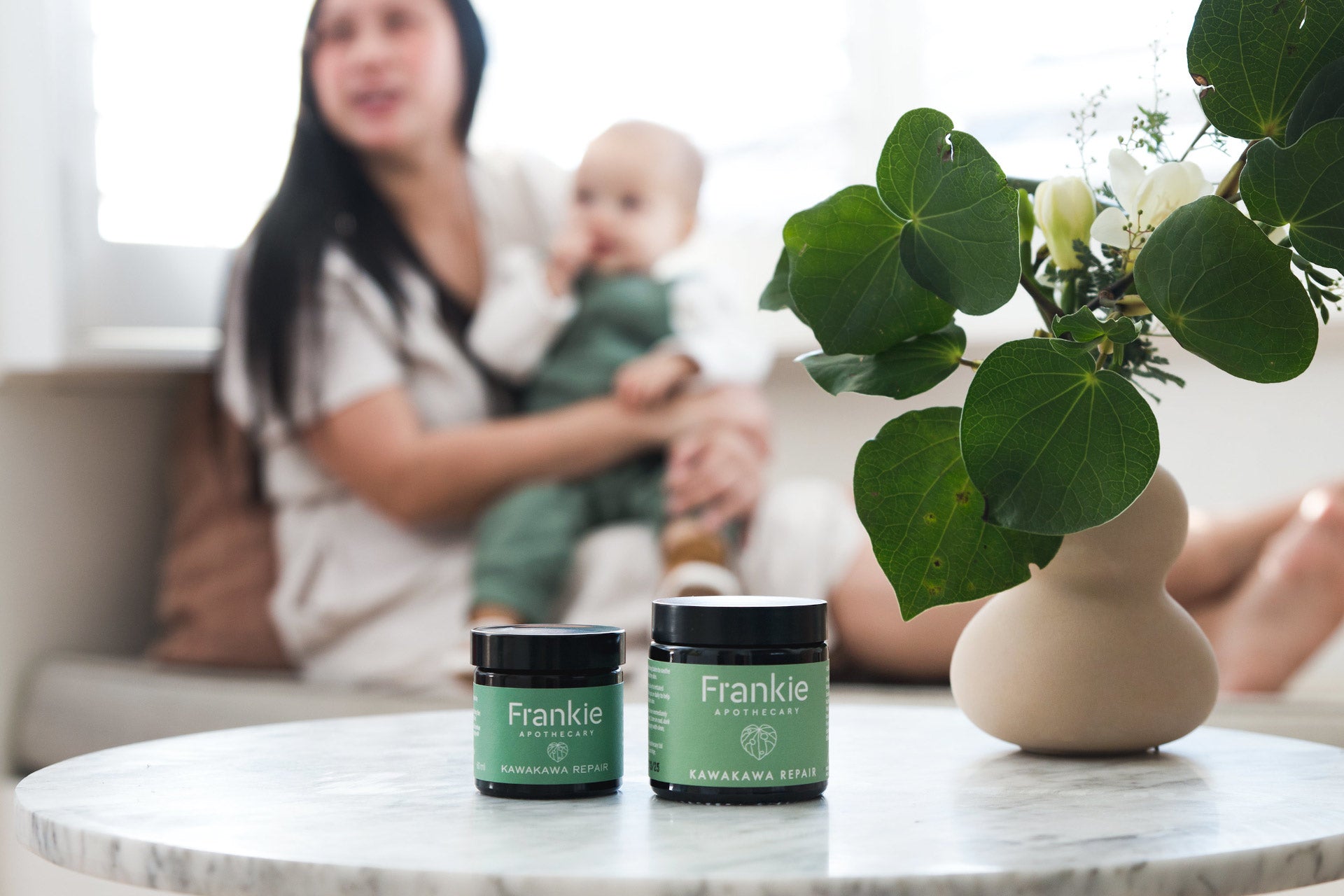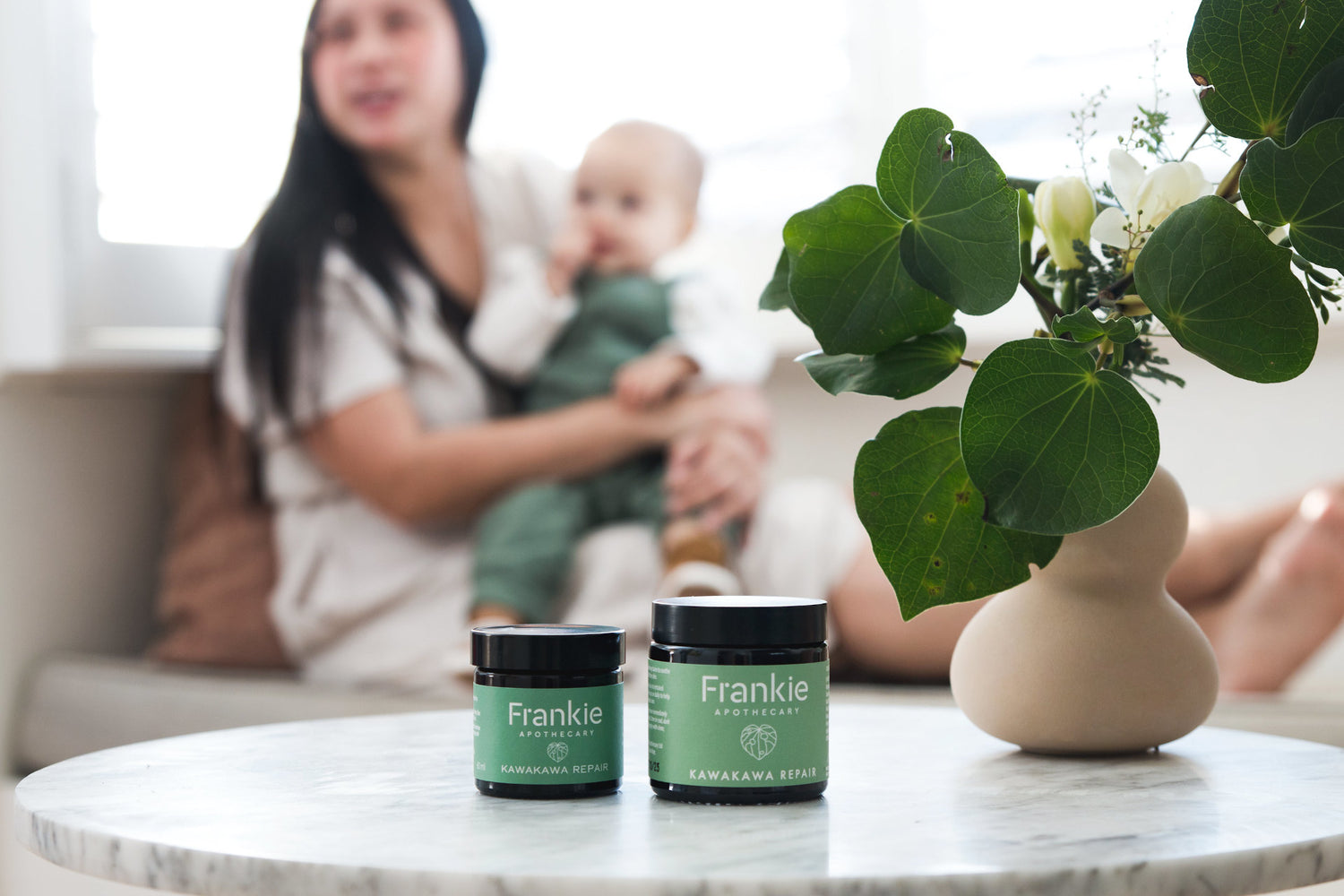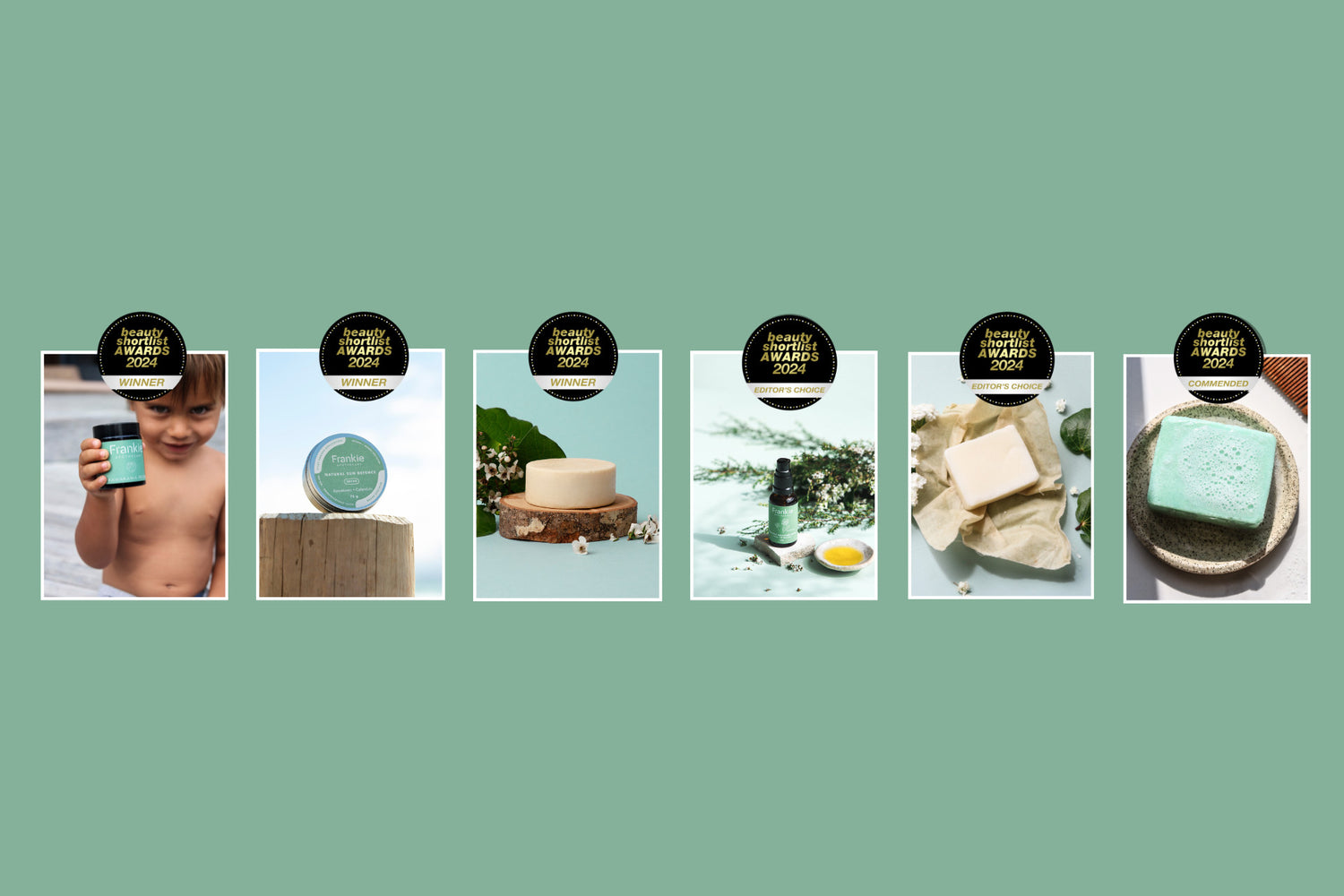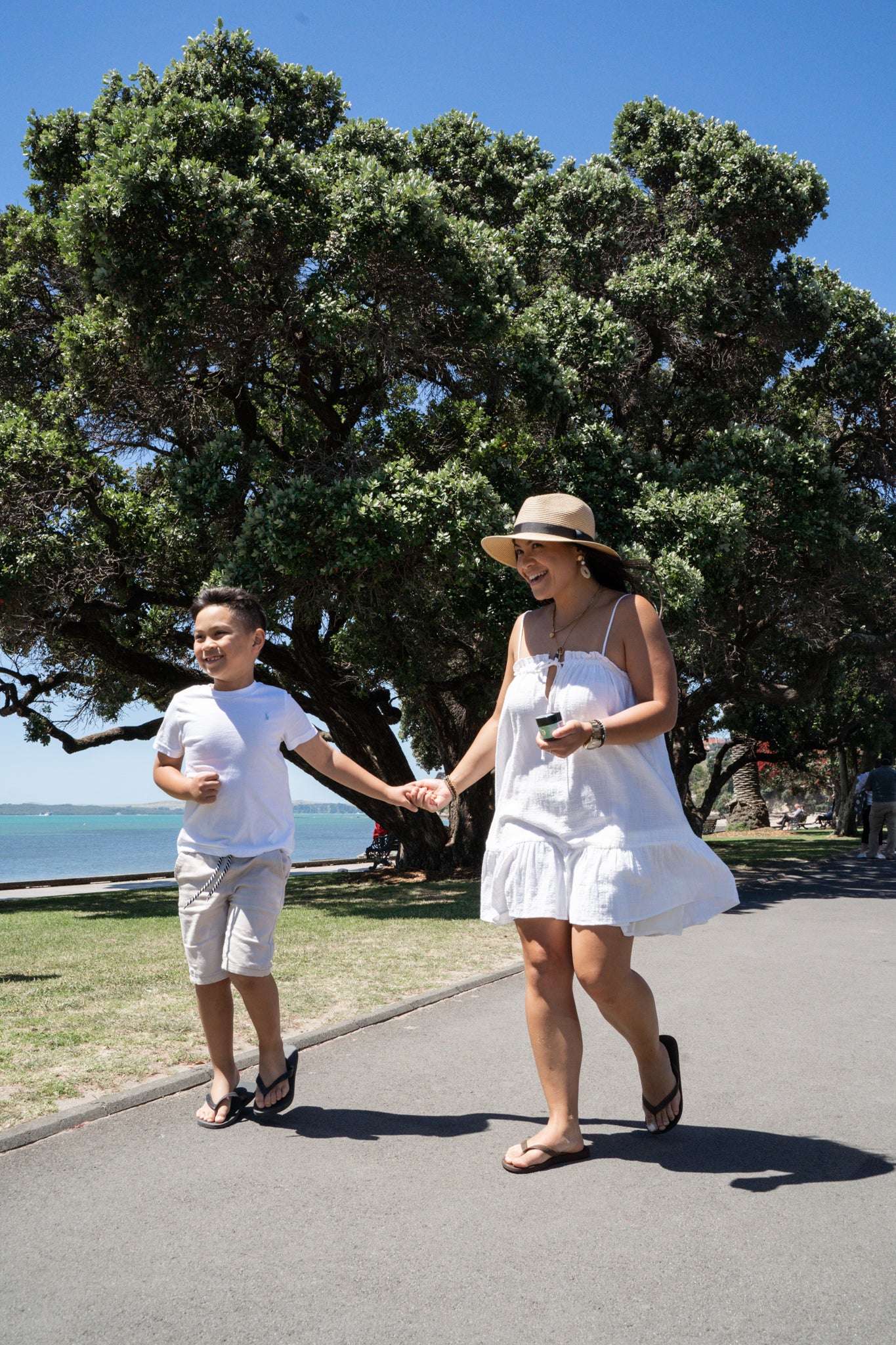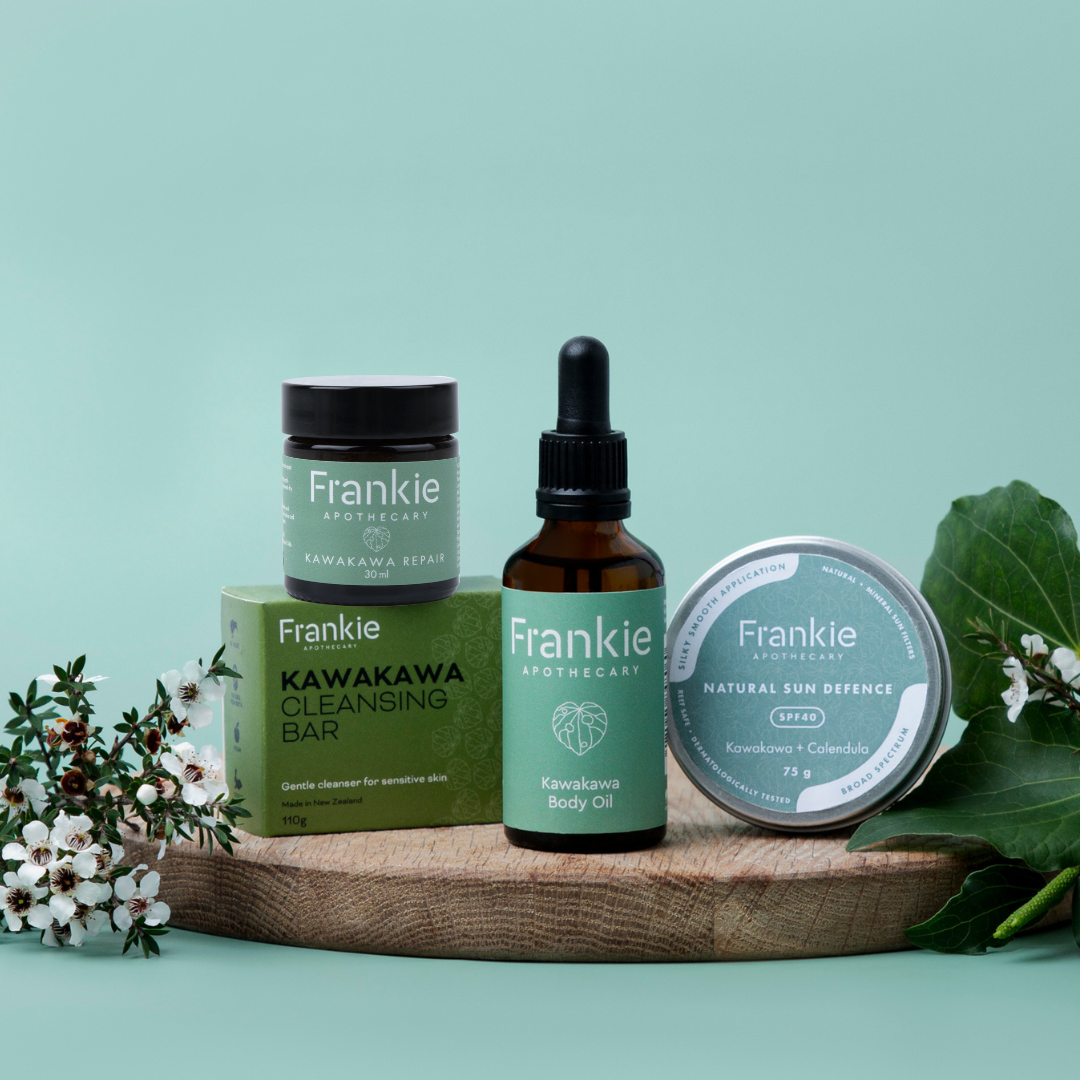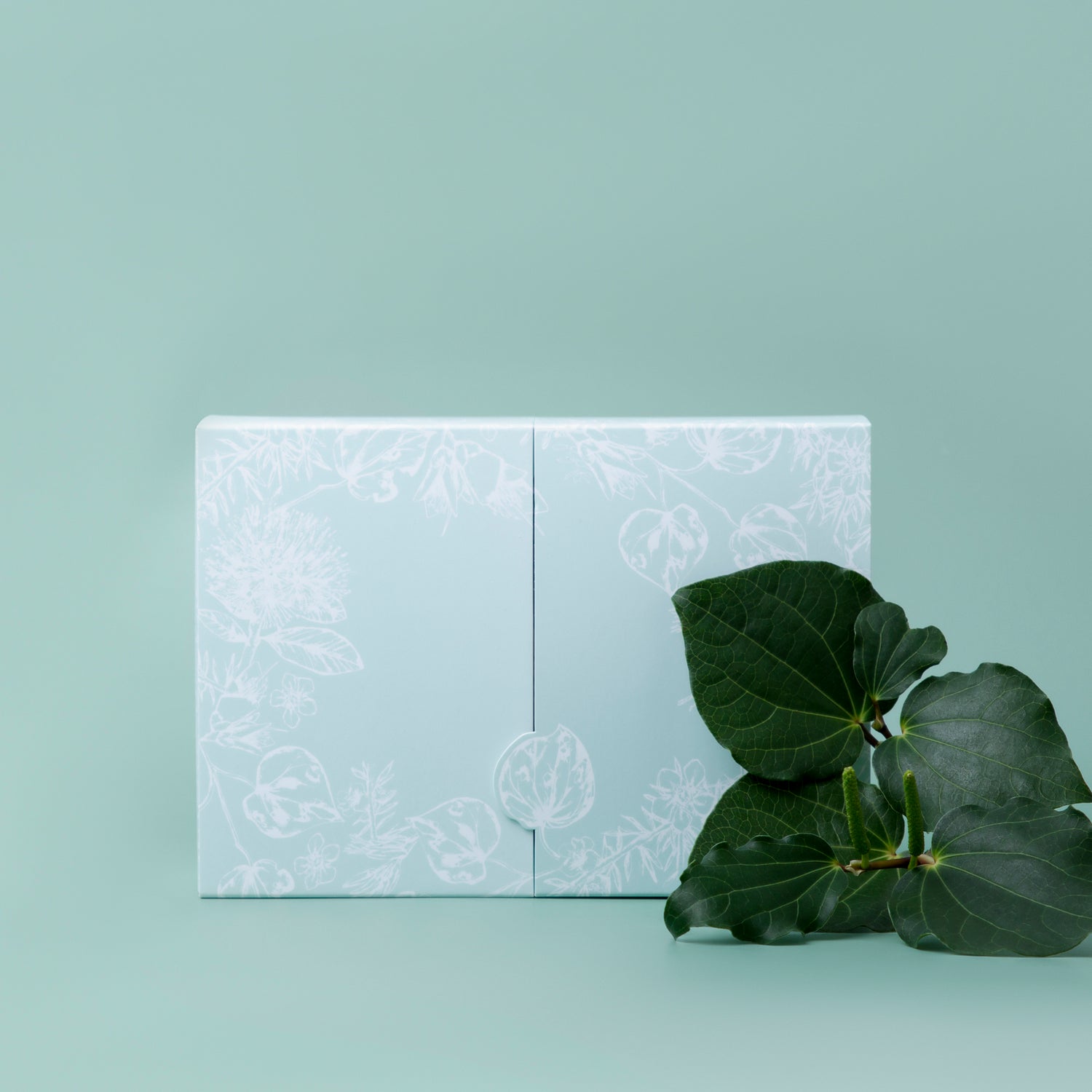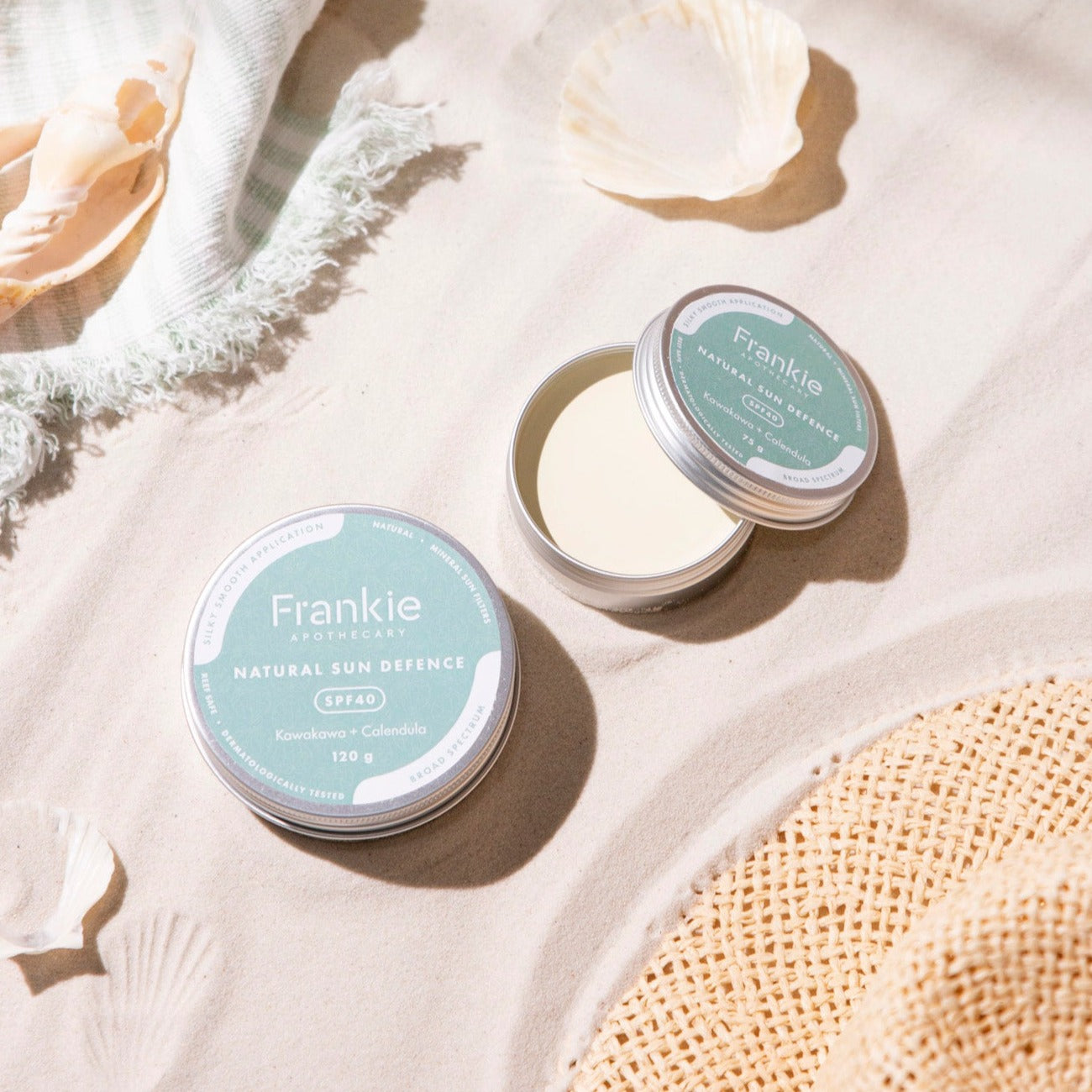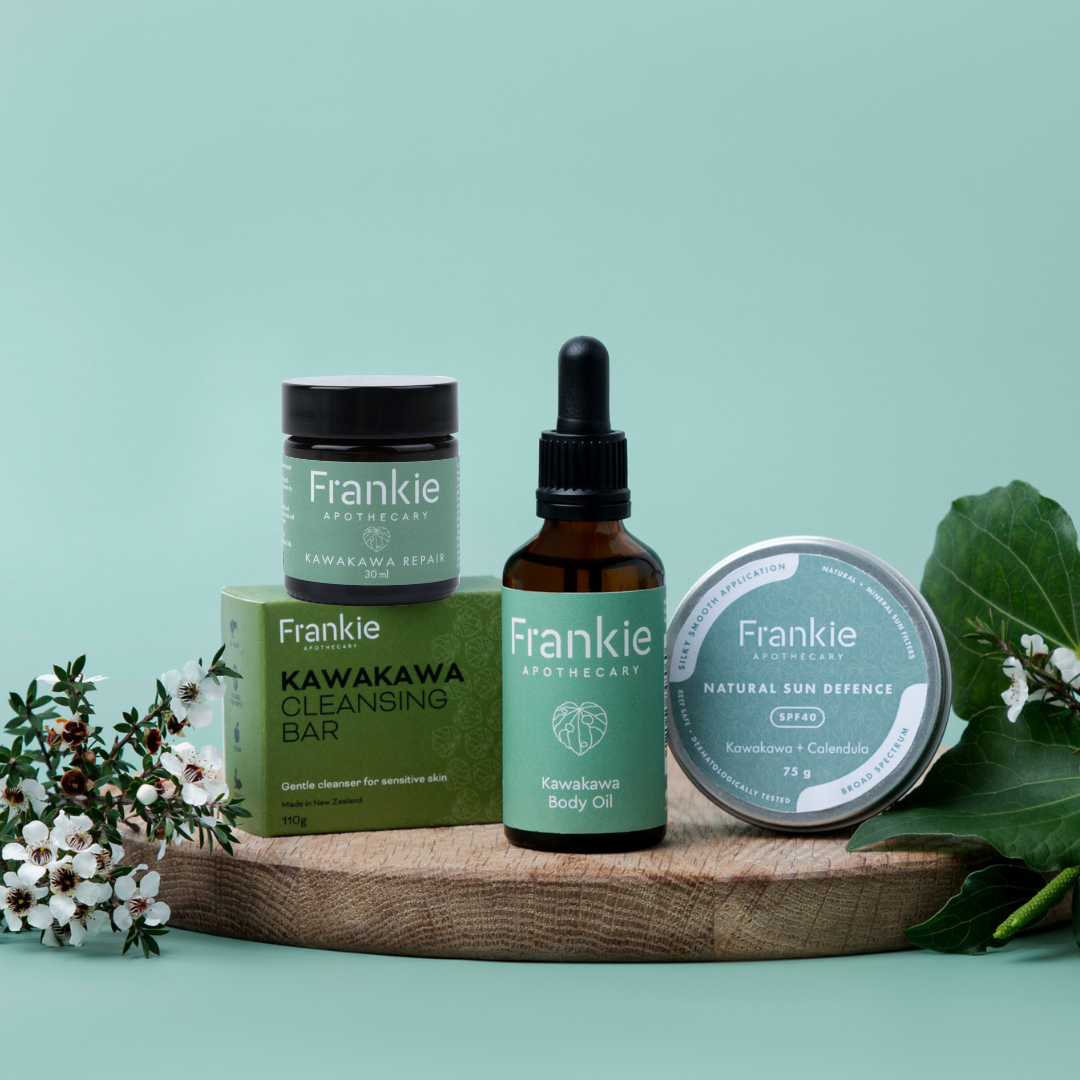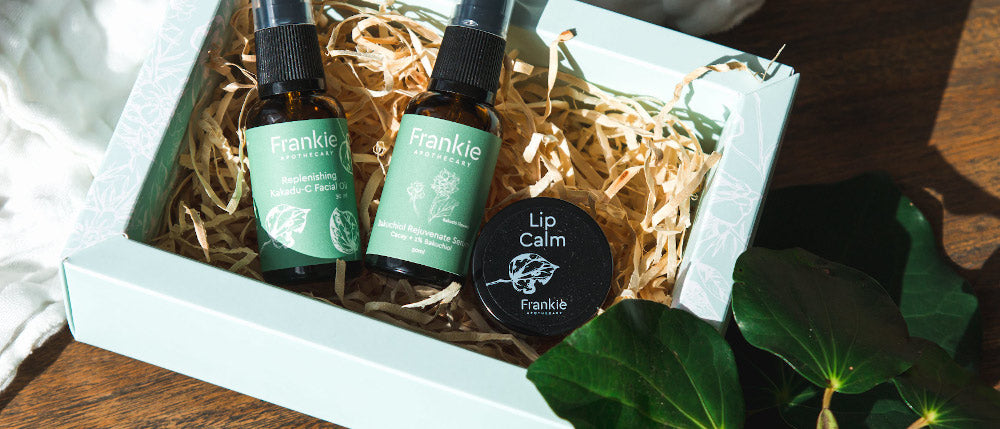Eczema is common in New Zealand's babies
If your precious new baby has patches of dry, flaky skin, skin inflammation, skin sensitivity or even red, weeping patches, it's likely that they are among the 15% of Kiwi children who develops eczema, and if they are Māori and Pacific it may be more severe.1-2.
Aroha for children with eczema is what began Frankie Apothecary's journey; and it is still very much our motivation! We'd like to share some tips about caring for your baby with eczema, but if you need extra help, please reach out to Matt and myself and we will try our best to help. Of course, always talk with your GP about your baby's eczema.
Eczema in small babies
Having a new baby is hard enough, especially if it is your first child. If your baby is suffering with eczema that adds another layer of stress to the situation - and most children with eczema usually first get the symptoms between 3 and 6 months of age. (60% of children who are going to get eczema have developed it by one year old, and 90% by five years old.)
Cradle Cap
Cradle Cap is very common in the first few months of young babies lives, and in the first few weeks, cradle cap is normally just caused by the baby's skin continuing to produce the waxy protective layer over their skin after birth, and doesn't do any harm. You can safely ignore it, or use a little Kawakawa Repair Balm to soften it for a few hours or overnight, making it easier to very gently massage through a towel to help it soften/loosen further. Rinse off with warm water and a gentle shampoo, or our Kawakawa Cleansing Bar for sensitive skin. If combing bub's hair, be very careful not to force any areas to loosen before they're naturally ready to do so to avoid infection developing.
However if it appears a little later, especially if it also appears under the arms and in other creases of skin, it could be caused by infantile seborrhoeic eczema, or even psoriasis. If it doesn't clear up (again you can use Kawakawa Balm to soften the layer) or if you see any accompanying signs of the baby being unwell, do go to your doctor.
Infantile Seborrhoeic Eczema
This form of eczema generally arrives in the first six months and can spread very quickly across your baby's skin, but the good news is it is not painful or itchy, and generally goes away fairly quickly. As long as the baby's skin doesn't become broken and get infected, it should not cause any serious issues. If you do see redness, cracks or weeping areas appear, do see your doctor as there is likely to be a secondary issue. Otherwise, just follow the normal steps for eczema - bathe in a just lukewarm (tepid) bath daily, avoid soap and bubble bath, and apply Kawakawa Repair Balm immediately after patting baby's skin dry with a fresh clean towel. You can apply Kawakawa Body Oil to unaffected areas to help care for baby's delicate skin.
Atopic Eczema in Babies
Oh, pēpi. This type of eczema can appear any time, and it IS itchy and sore. Baby will have dry scaly skin and you may see small cracks and weepy areas in their skin. It often appears in creases such as under arms, behind knees, nappy area, and in front of the ear lobes.
Watch for any patches of increasing redness or sensitivity on baby's skin, and follow these tips:
- Bathe baby daily in tepid water and add Colloidal Oat Soak for extra care. Never use bubble bath or harsh soap. Pat dry with a clean towel nobody else has used. Apply Kawakawa Repair Balm to all patches of eczema and the nappy area, and Kawakawa Body Oil elsewhere.
- Dress baby in very soft cotton - look for natural non synthetic fabrics and avoid scratchy wool (smooth merinos can be great).
- Be gentle with baby's skin - touch it gently as it can crack, and make sure to wash and dry your hands on a clean towel first.
- Avoid letting your baby get too hot or too cold as this can exacerbate the eczema, and damage their skin more, and also be aware that babies with atopic dermatitis don't have the same temperature control that they would otherwise have.
- Trim baby's nails carefully and you may wish to pop scratch mittens on them as well. You may decide to use cot bumpers if they are being rubbed by their cot, but do be careful about safety.
- If you have any concerns, do visit your baby's doctor for advice.
Caring for Toddlers with Eczema
Ahh the wonder and challenges of time with a toddler! As your little person develops their sense of self and cries 'me do!', this is a great opportunity to bed-in routines about eczema care and create great habits.
Bath time autonomy
Let your toddler tip their 2 heaped tablespoon of Colloidal Oat Soak into the bath and check the water temperature (after you have). Have their own Cleansing Bar beside the bath. Show them how to pat themselves dry and sing a little song about it. Ask them to cover their eczema patches with Kawakawa Repair Balm from their own special jar. Explain to them how their skin needs a super-hero layer on top, to protect it from the eczema baddies!
Play time
Eczema thickens the skin and also damages the skin's protective layer. This disrupts the toddler's ability to regulate their temperature through blood coming to the surface to help cool us, and sweating.
In addition to this, sweat, heat and cold air can all inflame eczema and make your child's discomfort worse.
It's a good idea to help toddlers with eczema avoid getting over-hot, or playing outside with exposed skin in very chill air. You can also use active cooling to help regulate their body temperature - like a cool cloth, a fan, cool drinks or even a tepid bath when needed.
Sunburn is another factor to avoid, especially for toddlers with eczema - and ironically, many sunscreens can contribute to eczema flare ups. Our special Natural Sun Defence SPF40 sunscreen was developed with sensitive skin in mind and has a SP40 rating.
"I think I bought the right Sunscreen for my son. He has been suffering eczema itchy skin more than before since he started daycare. Especially Summer sunshine makes his skin dry and irritated. We tried some other eczema sunscreens, however his skin became more dry... Finally I found Frankie Sunscreen which is very nourishing, moisturising and not harmful for eczema skin. After just one week, his skin became smooth. My husband (who also has eczema) really loves this product and started using it, so I had to buy 3 of them, (husband, son, and daycare)! We put Kawakawa Repair Balm on before sunscreen, they work together very well. I love to keep some stock of Frankie around the change mat so I can use them anytime." - Kahori
Kindy & preschool
If your small child with eczema attends a kindy, kōhunga, playcentre or preschool, pop a small jar of Kawakawa Repair Balm into a pocket of their bag and let the teachers know it's always there.
The Eczema Association shares a great letter that you can send to your child's preschool to allow the teachers to inform themselves about how to help care for your preschooler with eczema. Click to print it here.
Want to know more about how Frankie products help with eczema care?
Check out our Eczema Help section here.
References:
-
Time trends, ethnicity and risk factors for eczema in New Zealand children: ISAAC Phase three. T Clayton, MI Asher, J Crane et al. Asia Pac Allergy 2013;3:161-178.
-
Risk factors for atopic dermatitis in New Zealand children at 3.5 years of age. Purvis DJ, Thompson JMD, Clark PM, et al. Br J Dermatol 2005 Apr;152(4):742-9.


